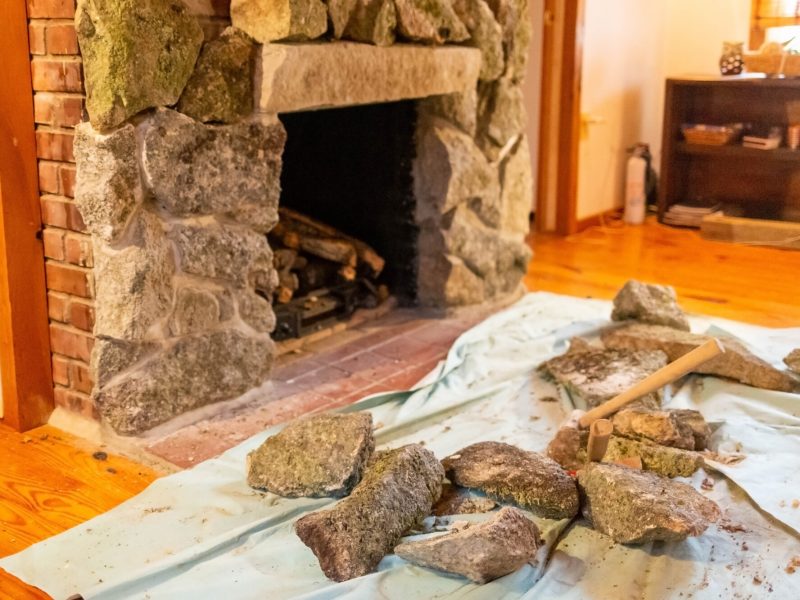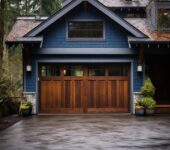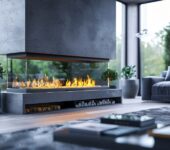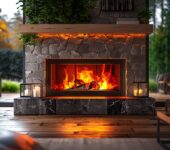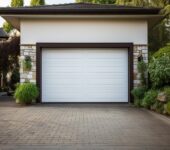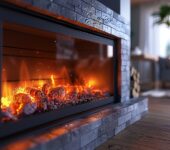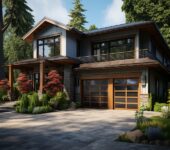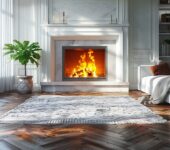Table of Contents
Data shows that heating equipment is the third highest average property loss for house fires. In 2020 alone, there was nearly $7.3 billion lost in property damage from house fires, and every 89 seconds, a new house fire is started.
The top causes of a house fire are electrical, kitchen, and fireplace accidents. When considering a new fireplace installation, it is crucial you review fireplace safety and obtain a local permit.
Fireplaces are excellent ways to save energy and improve heat distribution within your home. To avoid long-term complications and have a better idea of fireplace costs, you might be interested in learning about the installation process.
Luckily, we have a must-read guide for you. In our complete fireplace installation article, we will review five installation steps to help you better prepare for your new fireplace!
1. Choose Your Fireplace
You have three primary fireplace options: gas, electric, and wood. Gas fireplaces are one of the most common. They provide adequate heating and give the appearance of a real fire.
Gas fireplaces are also user-friendly and instantly produce heat. Electric fireplaces are similar in they turn on instantly and start delivering heat. They also don’t always require professional installation, potentially saving you thousands.
However, they are the most cheaply made option and are far less powerful than gas or wood fireplaces. Wood fireplaces give you the most authentic fire for outside or in your home. The downside of wood fireplaces is they require more clean-up, and you risk stray sparks.
No matter the fireplace you choose, ensure you brush up on fireplace safety, including always monitoring your fireplace when it is on. You should also ensure proper ash clean-up for wood fireplaces before reusing them.
2. Fireplace Placement
Direct-vent gas fireplaces are popular for fireplace placement. With traditional gas fireplaces, warm air can be lost through chimneys or vertical pipes.
You often lose heat and increase chances of back-drafting, where harmful gases reenter the house. Here are some key advantages of a direct-vent gas fireplace:
- Improved safety
- Improved heating efficiency
- More versatility
While it is ideal for placing your new fireplace on an outside wall, direct-vent fireplaces can also be placed anywhere where ventilation can be redirected through the roof. It uses outdoor air, creating a natural convection loop, and hot air escapes through pipe installations.
3. Fireplace Installation Permits
Fireplaces often need a plumber for gas lines and installation permits to ensure your unit is up to electrical codes. Size and placement can also vary between residential homes and codes.
Gas and wood fireplaces pose a higher risk for house fires, and most states and counties will require a permit before starting. It is essential you use a qualified and reputable company for your fireplace installation to ensure fewer fireplace issues and safety concerns.
4. Building Platform and Placing Vents
Before installing the actual fireplace, your qualified technician will build a platform and start placing vents if you choose a gas fireplace. The platform is where your fireplace will sit. Adequate ventilation ensures fireplace safety and adequate heating.
5. Installing Fireplace, Framing, and Mantel
After finishing the piping and ventilation, your professional team will start the installation and framing process. The installation process can take a few days, so plan accordingly. If you want a custom build, you will spend more time upfront with the engineering and design team during the construction phase.
How Much Does a Fireplace Installation Cost?
You can plan on paying between $2,000 to $4,000 for a new fireplace with installation. Wood and gas fireplaces tend to cost more, while electric fireplaces are an inexpensive but less effective option.
Other factors that can affect the final price tag are framing and mantel options. Custom designs can add thousands but affect the aesthetics of your home and can boost resale value.
Fireplace Troubleshooting
After your fireplace is installed, how can you find help for common fireplace issues? First, the company you used for installation and design will provide instructions for cleaning and caring for your new fireplace.
Each brand or type of fireplace might have different instructions. The most common fireplace issues are:
- Pilot lights
- Chimney obstructions
- Decreased heat output
Typically, pilot lights not lighting or staying lit are a couple of the most common issues with gas fireplaces. There are two primary causes:
- Thermocouple
- Poor cleaning
Thermocouples are essential in opening and closing gas valves. Broken or faulty mechanisms might keep the gas valve closed even when the pilot light is lit. Dirty fireplaces also pose hazards.
Dirt and debris can block the pilot light and cause it to not light. Dirty fireplaces increase chimney obstructions and reduce output. To keep your fireplace functioning smoothly, you should have it cleaned annually by a professional fireplace installation company.
You should also consider regular inspections. Inspecting your fireplace checks gas lines, vents, and chimneys to ensure that your fireplace does not pose a safety risk. Check your local guidelines since some parts of the country require annual safety inspections.
Start Installing a Fireplace Today
Fireplaces can add thousands in value to your home and help you stay warm this upcoming winter. The type of fireplace you pick determines the installation timeframe and cost.
At Dreifuss Fireplaces, we specialize in gas, wood, and electric fireplaces. We can even help with a custom fireplace installation. Installing a fireplace yourself could result in improper installation.
Are you ready to get started with your new fireplace? Contact us today and let one of our experts talk to you about the installation process.
Latest Articles
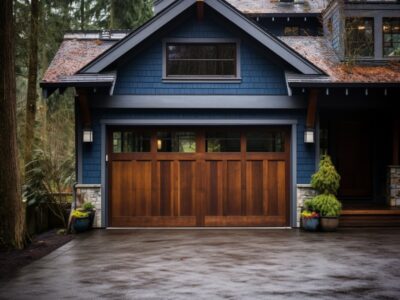
Window Garage Door: Framing Views, Enhancing Aesthetics
Table of Contents1 What Is a Window Garage Door?2 How Does a Window Garage Door Work?3 What Are the Benefits of Having a Window Garage
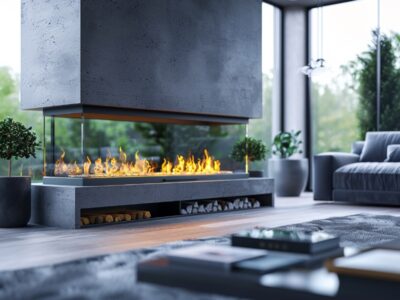
Can I Control My Fireplace With My Phone?
Table of Contents1 What is a Smart Fireplace?2 How to Control Your Fireplace with Your Phone?3 What Features Can You Control with Your Phone?4 What

Glass Door Garage: Elegance With Every View
Table of Contents1 What Is a Glass Door Garage?2 What Are the Benefits of a Glass Door Garage?3 What Are the Different Types of Glass



